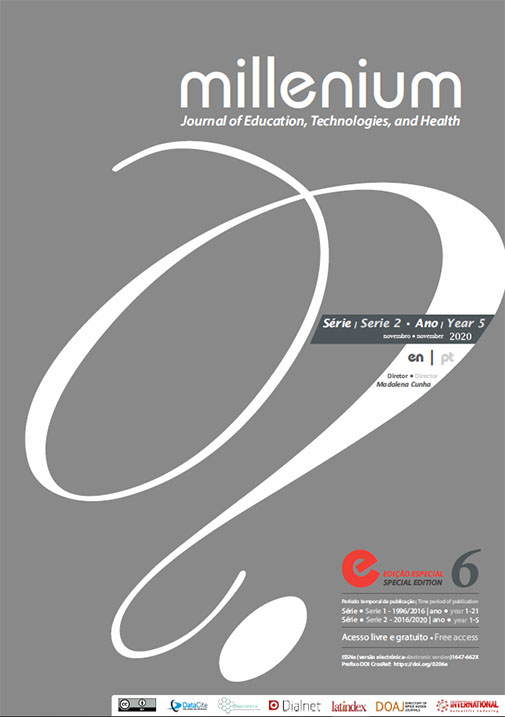Post-harvest characterization of the hazelnut sector
DOI:
https://doi.org/10.29352/mill0206e.01.00344Keywords:
hazelnut, industry, post-harvest, practices, producersAbstract
Introduction: Hazelnut is one of the most consumed nuts in the world, and its consumption is associated with numerous health benefits.
Objectives: This study aimed to analyse the post-harvest practices in the hazelnut sector in a sample of Portuguese producers living in the Viseu district and also in the unique Portuguese industry in this sector.
Methods: It was undertaken a descriptive cross-sectional study on a sample consisting of 11 participants (10 hazelnut producers and one hazelnut industry in Portugal). The surveys were applied by personal interview after informed consent only to adults (aged 18 or over).
Results: The results obtained showed that 80.0% had their hazelnut plantation in the form of an orchard, with areas under 10 hectares, and in most cases aged 20 years or more. The main varieties used by the producers were Grada de Viseu and Segorbe. For the industry, the main varieties were Grada de Viseu, Ennis and Tonda de Giffoni. For the majority of participants (87.5%), the harvest was done manually, with the fruits being stored in warehouses at room temperature and without relative humidity control. In the case of industry, hazelnut kernels were stored at a controlled temperature (0-10 ⁰C) and with relative humidity control (<70%). The material used for transport/sale was different for industry and producers.
Conclusions: This study clarified the post-harvest practices, as well as some of the difficulties experienced by hazelnut producers in Portugal.
Downloads
References
Alasalvar, C., & Bolling, B. W. (2015). Review of nut phytochemicals, fat-soluble bioactives, antioxidant components and health effects. British Journal of Nutrition, 113(S2), S68–S78. https://doi.org/10.1017/S0007114514003729
Aydoğan, M., Demiryürek, K., & Abacı, N. İ. (2018). World hazelnut trade networks. Acta Horticulturae, 1226, 429–436. https://doi.org/10.17660/ActaHortic.2018.1226.65
Bernardi, B., Stillitano, T., De Luca, A. I., Abenavoli, L. M., Zimbalatti, G., Benalia, S., & Tous, J. (2017). The assessment of hazelnut mechanical harvesting productivity. http://dx.doi.org/10.15159/ar.17.042
Botta, R., Molnar, T. J., Erdogan, V., Valentini, N., Marinoni, D. T., & Mehlenbacher, S. A. (2019). Hazelnut (Corylus spp.) Breeding. In J. Al-Khayri & D. Johnson (Eds.), Advances in Plant Breeding Strategies: Nut and Beverage Crops (pp. 157–219). Springer. https://link.springer.com/chapter/10.1007/978-3-030-23112-5_6
Correia, P. M. R., da Costa, C. A., Teixeira, D., Gaião, D., Correia, H. E., & Rodrigues, P. (2017a). Aveleira: Estado da produção. Centro Nacional de Competências dos Frutos Secos.
Correia, P. M. R., Lima, M. J., & Guiné, R. P. F. (2017b). Aveleira: Estado da Transformação. Centro Nacional de Competências dos Frutos Secos.
Correia, P. M. R., Pato, M. L., & Costa, C. A. (2017c). Aveleira: Estado da Comercialização. Centro Nacional de Competências dos Frutos Secos.
FAO. (2017). FAOSTAT - Crops. http://www.fao.org/faostat/en/#data/QC/visualize
Glei, M., Fischer, S., Lamberty, J., Ludwig, D., Lorkowski, S., & Schlörmann, W. (2018). Chemopreventive Potential of In Vitro Fermented Raw and Roasted Hazelnuts in LT97 Colon Adenoma Cells. Anticancer Research, 38(1), 83–93. https://doi.org/10.21873/anticanres.12195
INE. (2018). Estatísticas Agrícolas 2017. Instituto Nacional de Estatística.
Jung, J., Wang, W., McGorrin, R. J., & Zhao, Y. (2018). Moisture Adsorption Isotherm and Storability of Hazelnut Inshells and Kernels Produced in Oregon, USA. Journal of Food Science, 83(2), 340–348. https://doi.org/10.1111/1750-3841.14025
Mendes, M., Costa, M., & Santos, A. (2016). A segurança alimentar dos frutos secos e secados colocados no mercado, face aos resultados do Plano Nacional de Colheita de Amostras da ASAE. Riscos e Alimentos, 11, 5–9.
Noronha Vaz, M. T. (1999). Recent Portuguese developments in the nut sector. In L. M. Albisu (Ed.), Economics of nuts in the Mediterranean basín (pp. 77–88). CIHEAM.
Nunzio, M. D. (2019). Hazelnuts as source of bioactive compounds and health value underestimated food. Current Research in Nutrition and Food Science Journal, 7(1), 17–28.
Oliveira, I., Sousa, A., Morais, J. S., Ferreira, I. C. F. R., Bento, A., Estevinho, L., & Pereira, J. A. (2008). Chemical composition, and antioxidant and antimicrobial activities of three hazelnut (Corylus avellana L.) cultivars. Food and Chemical Toxicology, 46(5), 1801–1807. https://doi.org/10.1016/j.fct.2008.01.026
Ramalhosa, E., Cabo, P., Correi, P., & Ribeiro, C. (2018). Frutos secos de casca rija. Agrotec, 28. /noticias/frutos-secos-de-casca-rija/
Silva, A. P., Santos, F. A., Santos, A. S., Sousa, V., Lopes, A., Assunção, A., Leme, P., Carvalho, J., Borges, O., Ribeiro, R. M., Fernandes, S. T., Dias, R. J., & Aguiar, F. B. (2005). A aveleira. Projecto AGRO 162.
Silva, A. P., Santos, F. A., Santos, A. S., Sousa, V., Lopes, A., Assunção, A., Mota, B. S., Carvalho, J., Borges, O., Ribeiro, R., & Santos, T. (2003). Importância económica da cultura da aveleira. In J. Azevedo (Ed.), A avelã na sua alimentação (pp. 13–21). Tipografia Guerra/Viseu.
Tunçil, Y. E. (2020). Dietary Fibre Profiles of Turkish Tombul Hazelnut (Corylus avellana L.) and Hazelnut Skin. Food Chemistry, 126338. https://doi.org/10.1016/j.foodchem.2020.126338
Turan, A. (2018). Effect of drying methods on nut quality of hazelnuts (Corylus avellana L.). Journal of Food Science and Technology, 55(11), 4554–4565. https://doi.org/10.1007/s13197-018-3391-8
Turan, A., Karaosmanoğlu, H., Turan, A., & Karaosmanoğlu, H. (2019). Effect of drying methods on long term storage of hazelnut. Food Science and Technology, 39, 406–412. https://doi.org/10.1590/fst.20518
Downloads
Published
How to Cite
Issue
Section
License
Authors who submit proposals for this journal agree to the following terms:
a) Articles are published under the Licença Creative Commons (CC BY 4.0), in full open-access, without any cost or fees of any kind to the author or the reader;
b) The authors retain copyright and grant the journal right of first publication, allowing the free sharing of work, provided it is correctly attributed the authorship and initial publication in this journal;
c) The authors are permitted to take on additional contracts separately for non-exclusive distribution of the version of the work published in this journal (eg, post it to an institutional repository or as a book), with an acknowledgment of its initial publication in this journal;
d) Authors are permitted and encouraged to publish and distribute their work online (eg, in institutional repositories or on their website) as it can lead to productive exchanges, as well as increase the impact and citation of published work
Documents required for submission
Article template (Editable format)





